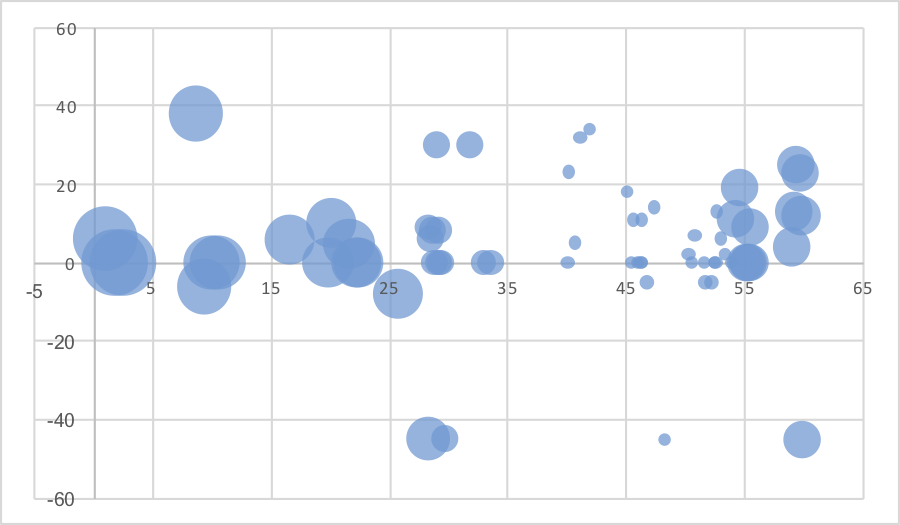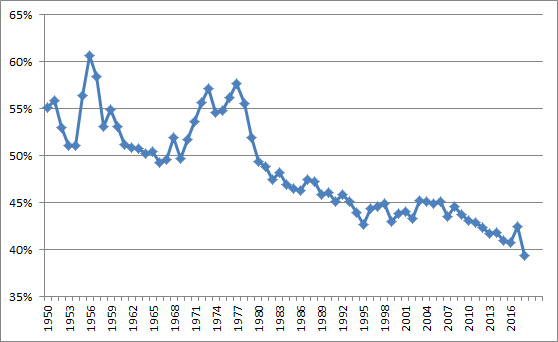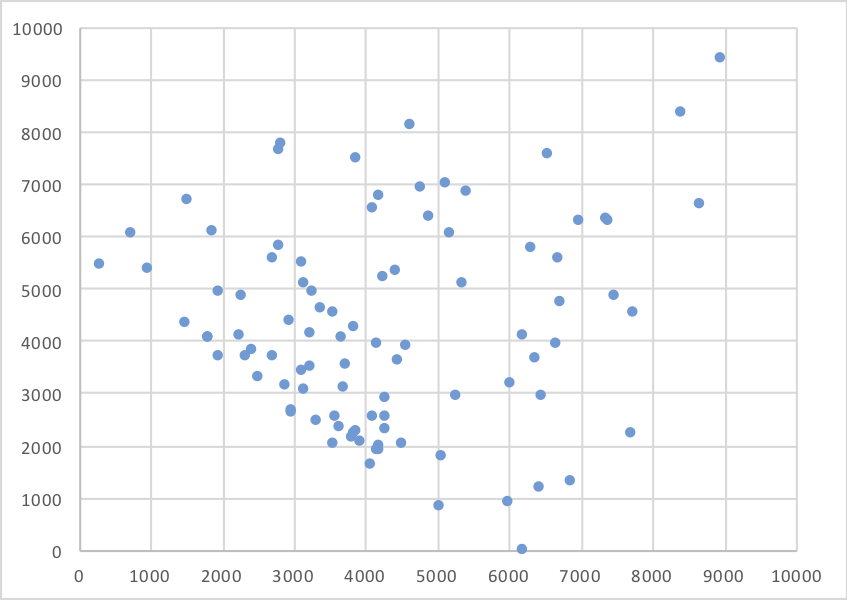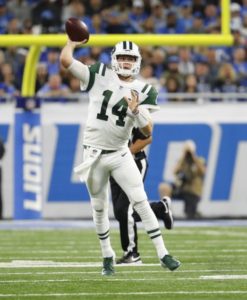Week 2 is not yet in the books, but NFL teams had the greatest regular season day of passing the league has ever seen. There were 28 teams playing yesterday and the group completed 711 passes out of 1,006 attempts — an astounding 70.7% completion rate! Those passes gained 7,848 yards, for a remarkable 7.8 yards per attempt average. And these players threw for 55 touchdowns against just 16 interceptions. The average team throws about 550 passes per season. On a per-550 attempt basis, this means the NFL yesterday was at 389 completions for 4,291 yards with 30 TDs and 9 INTs. And remember: this is the average quarterback.
As a whole, the league produced a 105.1 passer rating. Week 2 is not yet in the books, and the Thursday Night game drags the rating down slightly to 103.4, but no matter: week 2 will go down as the best week in NFL history by passer rating.
How do we know? Because prior to this week, the best single week in NFL history by passer rating came in week 10 of the 2010 season, at 94.8. The next three after that: week 12 of 2016 (94.1), week 3 of 2014 (93.9), and week 2 of 2015 (93.8). This week will blow every other week out of the water, and it’s not hard to see why: NFL defenses have been neutered. Penalties are out of control, according to some defenders, and this impacts the passing game in two ways. Quarterbacks are safer than ever in the pocket, as defenders are wary of getting a flag for hitting quarterbacks too low, too high, or even in the middle (a new rule prohibits a defender from using “all or part of his body weight to land on the quarterback immediately after the ball was thrown”). As a result, what used to be a hurried pass or a sack is now an opportunity for a quarterback to stand tall in the pocket and deliver an accurate throw.
In the secondary, things are just as tough, as defensive backs can’t hit defenseless receivers (and a “receiver is considered defenseless throughout the entire process of a catch, up until the player is capable of avoiding or warding off impending contact.”) The NFL also decided to more strictly enforce the illegal contact rule, meaning “a defender cannot initiate contact with a receiver who is attempting to evade him” after five yards. In other words, it’s harder for defensive backs to stop receivers from getting open, and it’s harder for pass rushers to sack quarterbacks.
This didn’t quite show up in week 1 (teams had a passer rating of 82.4). But that just makes this all the more remarkable. Last season, the league average passer rating was 85.1. It was slightly below that in week 1. And then, all of the sudden, a league that never hit a 95.0 passer rating for a week suddenly has a week where teams have produced a 103.4 passer rating. This remarkable turn of events needs to be monitored, as now the average quarterback is putting up Aaron Rodgers numbers (no, really: Rodgers has a career passer rating of 103.9).
On Sunday, there were 28 quarterbacks who threw passes. If you had a passer rating under 105, you ranked outside of the top 14. A remarkable 16 of 28 quarterbacks had a passer rating over 100 (17 if you remove a Nick Foles spike to stop the clock), and 23 of 28 had a passer rating over 95!
Just 5 of the 28 quarterbacks had a passer rating below the 2017 average of 85.1, which might be the most remarkable of all these stats. Welcome to the 2018 NFL, September 16th edition, where over half of the quarterbacks completed over 70% of their passes.
The single most important question facing the NFL right now: is this new level of efficiency here to stay? If so, we are about to enter an era of football that is significantly different than the league that Tom Brady entered in 2000, where the average team completed 58.2% of their passers and had a passer rating of 76.2. But this is what I suspect the NFL wants: quarterbacks and receivers are less likely to get injured, teams will continue to shift towards passing over running, and quarterbacks will look like superstars with record-breaking numbers.






